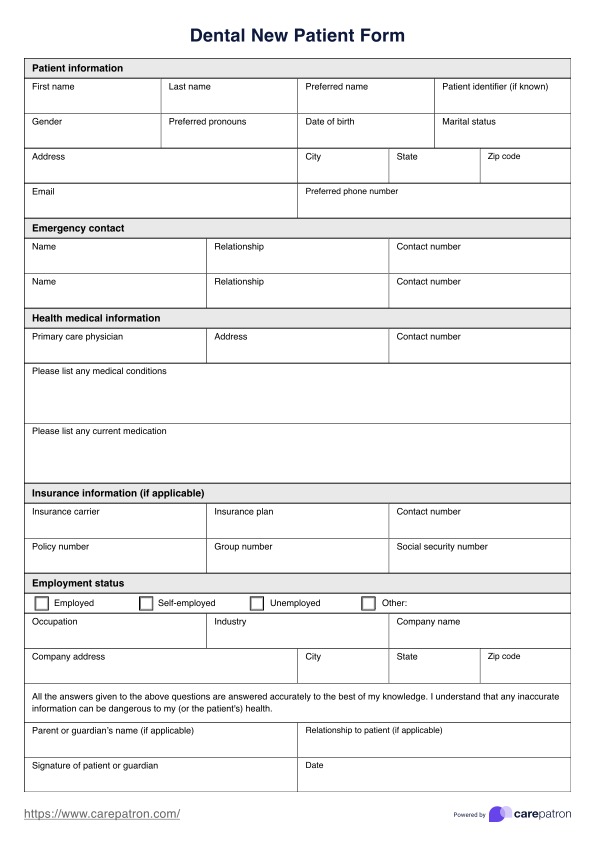The intake process will vary slightly between dental practices, but certain procedures are fairly universal. Firstly, the patient will book an appointment at your practice, after which you will give them a copy of an intake form. These forms will gather information that needs to be uploaded into your practice's system, and you should create a new patient profile and validate their insurance plan. Next comes the actual appointment, which you should follow up with by asking for feedback and/or booking a subsequent session.

Dental New Patient Form
Implement this Dental New Patient Form to improve your dental practice's patient intake process. Download it for free today!
Use Template
Dental New Patient Form Template
Commonly asked questions
These documents are used when a new patient signs up for treatment at a dentistry practice. Although the form's completion date can be flexible, it should be completed before the first session.
These forms are primarily used to gather information about a patient. Access to this data is critical for the dental practitioner to make informed and accurate decisions about the patient's treatment.
EHR and practice management software
Get started for free
*No credit card required
Free
$0/usd
Unlimited clients
Telehealth
1GB of storage
Client portal text
Automated billing and online payments











